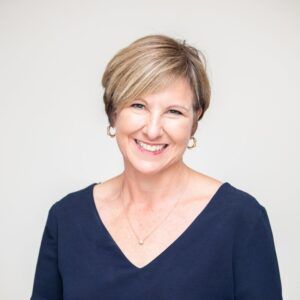
There has been a shift in how research into new therapies and medical technologies is conducted globally, and the new format is one that particularly suits Australia, a country nearly as large as the whole of Europe. Decentralised trials are bringing the research to the people, as trial investigators set up shop in more regional and remote areas of Australia.
The COVID-19 pandemic accelerated the uptake of decentralised trials to ensure that research could continue for life-saving therapies and medical technologies, and demonstrated that this model of clinical trial is effective.
MTP Connect, an independent not-for-profit organisation established by the Australian Government, produced an important report in 2021 which covered the clinical trials landscape in Australia.
The report highlighted opportunities to improve patient access and retention in the long term through the increased utilisation of decentralised trials. The report also suggested decentralised trials are a more patient-centric strategy, and could improve patient participation and retention by reducing the burden of travel on patients.
 Kaye Hewson |
Kaye Hewson is the Director of the Australian Teletrials Program, and has spent the last fifteen months leading the initiative to promote the value of decentralised trials and allocate government funding received in 2021 to boost research across the country.
Speaking with London Agency, Ms Hewson explained the nuances between a decentralised trial and teletrial. Certain online sources use these terms interchangeably; however they do not actually mean the same thing: “A decentralised trial is, very simply put, a clinical trial that goes into a patient’s home from a central point. Teletrials are a sub-component or a type of decentralised trial,” said Ms Hewson. |
“A teletrial is a primary coordinating site that works with a local site, which is called a satellite site.”
The satellite site collaborates with the primary coordinating site through telemedicine and digital health technology, and mobile or local healthcare providers provide the investigational drug or medical technology to the patient.
These types of clinical trials are a golden opportunity for healthcare practitioners in remote and regional areas of Australia to expand their knowledge and experience through administering a novel therapy and working with a primary coordinating site.
One of the challenges that industry and trial sites face when implementing a decentralised trial is the initial set-up cost, which is fixed and irrespective of the number of trial participants recruited.
The Australian Teletrial Program has $75.2 million in federal funding to support infrastructure development to support clinical trial sites closer to home for patients and with their trusted local healthcare providers. Ms Hewson said:
“We’ve done a lot of work on the infrastructure, setting up these Regional Clinical Trial Coordinating Centres, getting people recruited into these roles, working through what commercial sponsors need and want.
“Supporting our clinician researchers with streamlined processes and start-up specialists is important. We are learning from our patient experience and the need to include them in our planning and codesign of clinical trials outside of metro areas. We’ve developed some resources with for consumers in partnership with Alfred Trial Hub and Cancer Council Victoria.
“Through our funding we fund a primary site with $5,000 every time they bring on a satellite site. And then at the satellite site, we fund per patient, so we can give $700 depending on the location of site.”
The Research & Development (R&D) Taskforce is a multi-sector collaboration between Medicines Australia, AusBioTech and the Medical Technology Association of Australia (MTAA). According to the R&D Taskforce, Australia is at the start of its teletrial revolution: “We’re still in the early phases of nutting out the challenges and seeing where we can do better in terms of implementing these solutions.”
The MTP Connect report noted that the clinical trials sector employs 8,000 Australians, and $1.4 billion was spent on clinical trials in Australia in 2019. For the medical technology industry specifically, MTAA reported in 2023 that more than 60% of the companies surveyed had trials starting in the next 12 months, supporting over 400 jobs in the Australian clinical trials sector. Whilst the sector now generates more export revenue than construction, intellectual property charges and government services, Australia’s share of global industry-sponsored trials was just 5%.
Industry’s answer to boost Australia’s profile as a clinical trials destination is to turn as many of their clinical trials into decentralised trials as possible. Members of the Taskforce said: “We want to be competitive internationally and ensure as many Australians as possible have access to trials and the latest clinical innovations.”
Members of the Taskforce noted that many healthcare professionals are reaching out to find out how they can be involved in a decentralised trial, which is a step in the right direction.
“The hope is ideally for some patients in the future, they can fully have their trial administered virtually at home. Not every trial, but some trials they could possibly have from their home interacting with their doctor by the phone, with devices to support,” noted the Taskforce.
Clinical trials are an important contributor to the Australian economy, and the best way to increase their importance is to scale by expanding outside of the metropolitan areas of Australia.
The government funding to bolster Australia’s teletrials landscape is a unique opportunity to determine whether this model will be a long-term solution to bridge the healthcare gap for patients living in rural and remote parts of the country.
Thank you to Kaye Hewson, Director of the Australian Teletrials Program, and the Medicines Australia, AusBioTech and the Medical Technology Association of Australia (MTAA) R&D Taskforce, for their time being interviewed for this article.